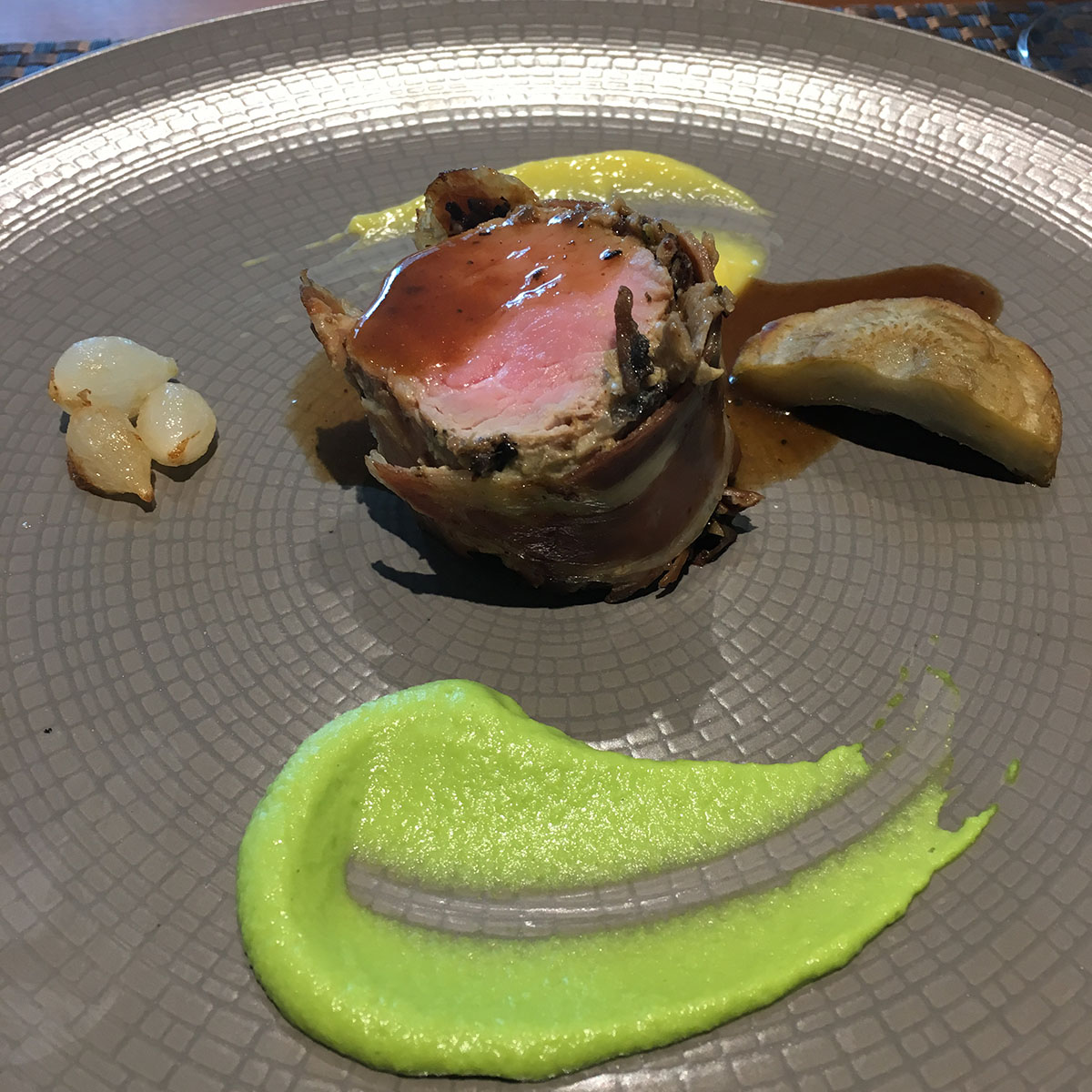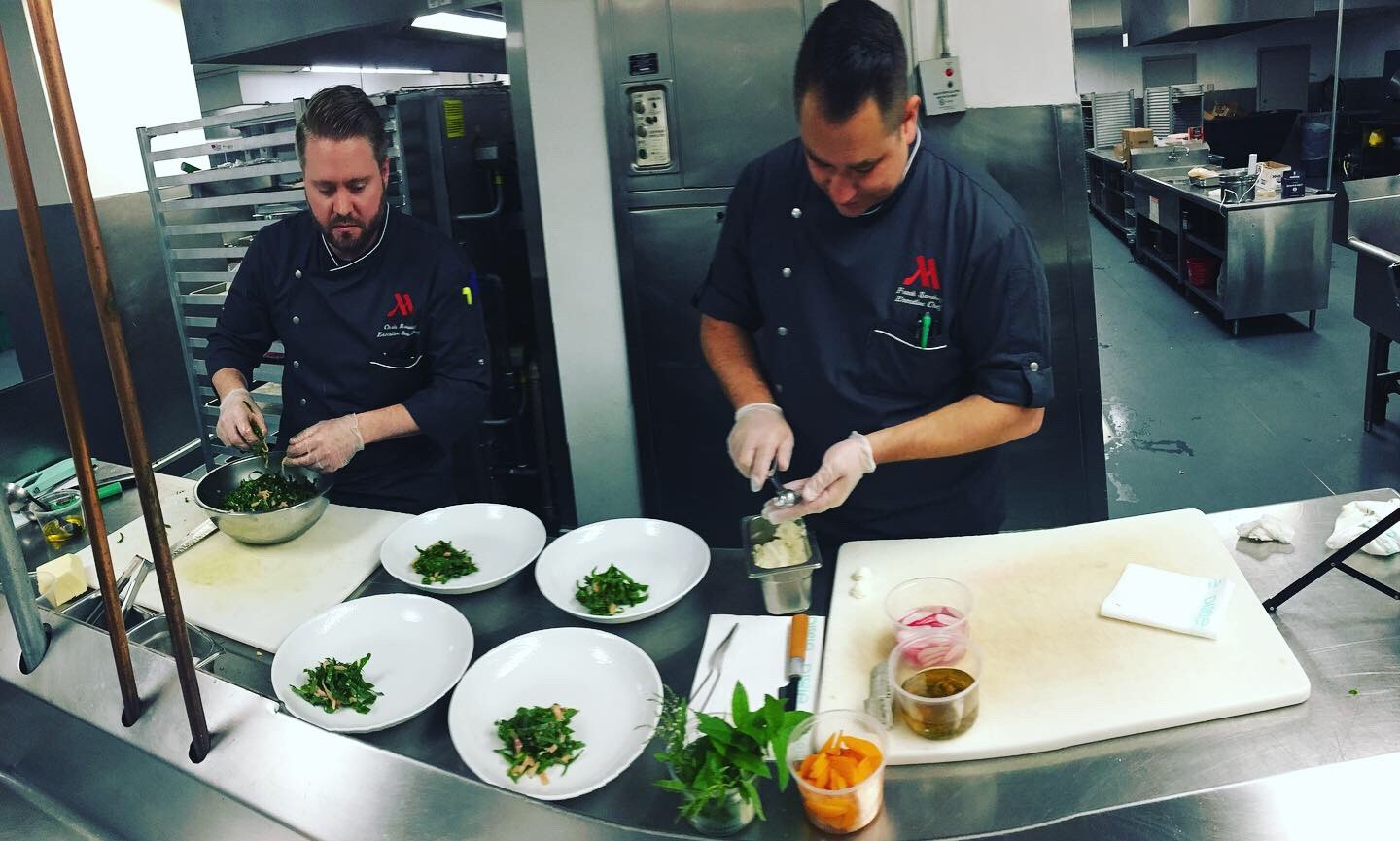What are you feeding your meeting attendees? How you handle menus plays a big role in how people perceive your event. Attendees who can’t eat what you’re serving or don't feel comfortable about kitchen practices aren’t likely to have a productive meeting.
Ask your venue's chef these four questions so your meeting’s menu is both delicious and accessible to everyone.
Prefer to listen? The Meetings Today Podcast is now on Spotify.
1. Do you follow sustainable food practices?
Frank Sanchez, executive chef at the Chicago Marriott Downtown Magnificent Mile—a Marriott Convention & Resort Network property—said a venue that showcases its green values will be more attractive to attendees.
 “Whether it’s composting or they have a digester or something like that, those are all good things to know,” explained Sanchez. “At Marriott, we have a very large sustainability program, and we’re very proud of it. One of the small things we do here is having water stations everywhere with glasses instead of handing out so many plastic bottles. It’s a simple change, but it can go a long way toward perception for people.”
“Whether it’s composting or they have a digester or something like that, those are all good things to know,” explained Sanchez. “At Marriott, we have a very large sustainability program, and we’re very proud of it. One of the small things we do here is having water stations everywhere with glasses instead of handing out so many plastic bottles. It’s a simple change, but it can go a long way toward perception for people.”
Depending on your clientele, you might also ask what happens with leftovers. Some venues donate meals to local shelters, for example.
2. How do you prepare food for attendees with dietary restrictions?
People who have food allergies or other restrictions can sometimes struggle at conferences, especially when allergens aren’t labeled. Ask chefs how they build menus and what they can do to accommodate the most common food allergies, especially if you’re aware of any special dietary needs your attendees have.
“Do you label all of your buffets? Are you taking an inclusive approach to writing your menus? All of those are important, especially as these things become more prevalent,” Sanchez said. “You don’t want to be reactive. You want to be proactive. How you approach your food offerings is a big deal.”
The more information you can provide the chef, the easier it will be to create a menu that works for everyone, added Sanchez. His kitchen already labels meals with major allergens and takes steps to eliminate unnecessary sources of gluten, like tossing chicken wings in rice flour instead of wheat flour.
“If I have a larger group and a large portion are gluten-free, I may just make the entire meal gluten-free so we can hedge our bets,” he said. “It makes it easier on us and it makes it easier on the attendees as well. It lets the attendee be a little more at ease and more comfortable. You don’t want to make somebody feel like they’re out of place when it comes to a meal.”
3. Do you use local sourcing?
 How is your chef incorporating local ingredients? Sourcing locally whenever possible speaks to the venue’s sustainability practices, but also means your event’s menu will have a local spin that attendees can’t find anywhere else.
How is your chef incorporating local ingredients? Sourcing locally whenever possible speaks to the venue’s sustainability practices, but also means your event’s menu will have a local spin that attendees can’t find anywhere else.
Sheraton Grand’s director of food and beverage, Amanda Dunlap, shared how a local single barrel bourbon, FEW, is only served at her hotel along the Chicago River. It’s a drink that can be served at events. “We love doing things custom for groups,” she said.
Using local ingredients might also mean putting a regional spin on a classic, like the Marriott Downtown Magnificent Mile’s lobster roll. “There are no lobsters in Chicago,” Sanchez laughed. “But the lobster roll is a very popular item—right now, it’s the most popular item in our bar. The way we put a Chicago take on it is that we treat it as a Chicago dog. It’s taking all of those ingredients from a Chicago dog and adding them to a lobster roll. It makes it different for Chicago, and it also makes it different from another lobster roll.”
4. Can we customize our group's menu?
“This may be the most important,” Sanchez said. The point is to give your attendees what they want. "The easiest way to do that is by asking. I always say I like to do the heavy lifting for the meeting planners. When a meeting planner asks what we can do differently or to think outside the box, that’s when we get the best food. Chefs are creative, and they want to be creative for you.”
Give the chef as much information as you can to help shape the menu, Sanchez recommended. Roughly 70 percent of the hotel’s menus are custom-made according to Marriott, so you’re not imposing on the culinary team by asking.


“I like to ask basic questions. What meal period is it? What are you looking for? Are you looking to network? Then I’ll guide you to small plates. Are you looking to do exhibits or things to be accessible and stroll through? We do a lot of strolling lunches and dinners where you grab something and are still able to talk to people and look at things. As long as you give us the structure of what you’re looking for, I can make those suggestions.”
Work with the chef or the food and beverage team to create a menu that’s tailored to your group. It may require more work up front, but a memorable meal can elevate a good event to a great one.







